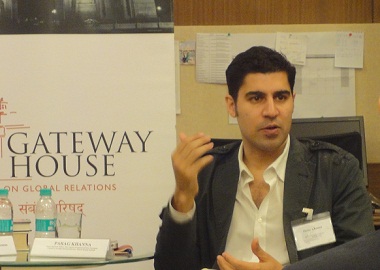
Recent developments and events in the world have indicated the birth of a new world order. It has become increasingly evident that non-state actors play a significant role. In order to better understand this new phenomenon, Gateway House: Indian Council on Global Relations hosted Parag Khanna, author of The Second World and How to Run the World: Charting a Course to the Next Renaissance. In the latter book, he argues that the Middle Ages must be considered as a template for the 21st century.
The discussion focused on how government continues to play an important role, but multiple actors like corporations, cities, NGOs, and philanthropists also act as independent diplomats, influencing decision making. Furthermore, the concept of a city-state, each city conducting its own diplomacy, was put forth. During this insightful discussion, important issues such as corporate accountability, the role of the common people and the role of emerging economies were also addressed.
Khanna’s thesis is based on the notion that the world is entering a perfect storm of calamities: a great game for scarce natural resources, financial instability, environmental stress, and failing states. In some respects, he says, it isn’t far off from the medieval landscape of almost a millennium ago. In today’s multi-polar, multi-civilization world, he asserts that every empire, city-state, multi-national corporation or mercenary army is out for itself. Khanna discusses what he terms as the current “global chaos” and offer his road-map for creating a stable world.
